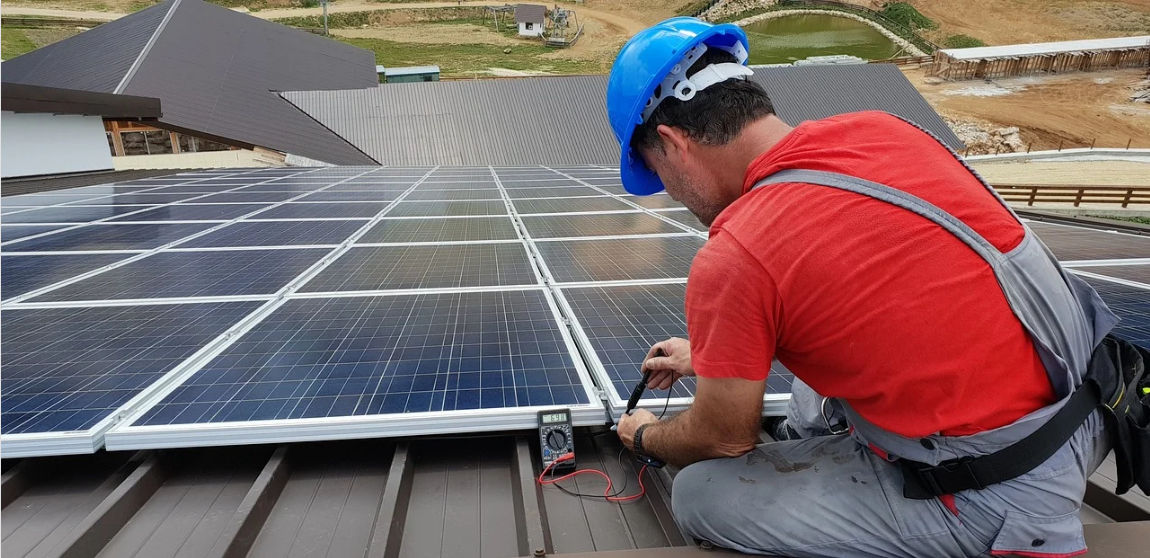The adoption of solar energy in the United States is increasing, and with it, the opportunity for notable market expansion for the companies and field services teams that site, install and service these projects.
Spurred by growing business and consumer demand for clean electricity, technology advances, and favorable federal and state policies, 63 GW of new utility-scale solar power generation is expected this year, adding significantly more than the 40 GW added in 2023. However, solar energy accounts for just 3.4% of all U.S. electricity generation, meaning there is room for significant expansion.
Customers now have multiple options to choose from when deciding how they deploy and use solar power. Large businesses can integrate solar power with battery energy storage systems, capturing, storing, and flexibly deploying this green power source as needed. Advances such as transparent solar panels and thin-film technology also promise to make solar energy more suitable for various business and consumer applications.
Despite these promising trends, challenges stand in the way of boosting solar adoption. High costs, unskilled or inaccessible labor, and negative public sentiment could prevent solar from growing at the rates predicted.
- Solar costs are slowing growth: Installation costs are a vital concern for cities, commercial and residential developers, and landowners who approve these projects. Deploying utility-scale solar installations ranges from $16/MWh to $35 MWh —comparable with other energy forms used to generate electricity. However, as any student of renewables knows, solar typically adds to, rather than replaces, traditional energy sources because of its intermittent nature. So, these costs are additive to overall energy investments rather than subtractive for project owners. In addition, deploying solar power requires specialized labor, including project developers, energy analysts, solar and electrical engineers, electricians, project managers, operations and maintenance technicians, thermal engineers, and software developers. As a result, labor costs are estimated to constitute 7% of a project’s total price.
- Project owners have difficulty accessing skilled labor: The rapid growth of the solar industry is outpacing workforce availability and skills. While the U.S. Inflation Reduction Act will create 100,000 new clean energy jobs, solar project developers will likely be hard-pressed to fill them. In addition, current workers will need to be upskilled on new technologies and processes.
- Navigating negative public opinion: Corporate solar energy adoption has grown steadily over the past few years, accounting for nearly half of all new deployments since 2020. However, consumers and other business leaders may believe solar energy is expensive, doesn’t provide immediate results, requires extensive maintenance, and can be easily damaged.
The good news is that there are strategies to address these issues to grow solar energy adoption and accelerate the country’s transition to green energy.
Strategy 1: Deploying technological solutions to manage solar energy cost challenges
The average cost to deploy solar panels residentially has been estimated at around $25k, but final costs vary depending on panel type and model; auxiliary equipment costs; and federal or state incentives. In addition, homeowners need to budget for ongoing system maintenance, cleaning, and repair.
Technology can improve solar power efficiency and performance. Internet-enabled sensors on solar panels and components provide a continuous stream of data on the system’s energy production levels, temperature and efficiency. Then, artificial intelligence (AI) and machine learning (ML) algorithms analyze sensor data, detecting anomalies that could indicate a need for proactive or predictive maintenance.
With intelligent monitoring capabilities, operators can detect problems in real-time, decreasing system risks and operating and maintenance costs.
Strategy 2: Addressing labor challenges in solar energy through technology
A recent survey found that nine in 10 U.S. companies are struggling to find the skilled labor forces they need, and job growth continues to outpace the existing talent base.
Solar development companies can use technology to help bridge this gap in several ways. These firms can use tools, such as generative AI copilots, knowledge bases, and web and mobile field services apps to train workers on the latest technologies, methodologies and practices. Workers leverage intuitive interfaces and natural-language queries to learn about new processes, such as implementing new technology or using intelligent monitoring systems.
In addition, workers can use data analytics and AI-powered systems to plan projects, optimize task performance and chart progress. Field service software streamlines projects, from managing work orders; to scheduling, dispatching, and monitoring their workforces; to estimating and invoicing. This integrated functionality helps companies optimize task assignments based on skills and location and ensure that projects are completed promptly and efficiently.
Solar development companies can also use these tools to tap gig workers for assignments, gaining access to an on-demand talent pool and filling skills gaps as needed.
Strategy 3: Shaping public opinion on solar energy through tech-enabled transparency and engagement
Utility-scale solar and wind projects are facing increased headwinds. In Michigan, community members have blocked more than two dozen large-scale projects, while across the U.S., 35 states have implemented 228 restrictions to do likewise.
Solar development companies can leverage field service software to help foster positive public sentiment about solar energy by increasing transparency about planned projects. They can provide real-time data and operational insights about planned projects, building community trust that they will proceed as promised. With this strategy, they can help educate the public about how solar energy works and the benefits it will provide to their communities.
Field service technology
With the recent passage of the Inflation Reduction Act, solar credits for qualifying projects have soared to 30%, providing a compelling reason for businesses and consumers to adopt this technology.
Solar development companies can cash in on this boom by using field service technology to manage and reduce project costs, access new talent pools and upskill workers, and positively influence public opinion about the worth of these projects. Companies that adopt all three strategies and use field service technology can win new projects, manage them to successful completion, and scale their businesses.

Raghav Gurumani is CTO & Co-Founder, Zuper, a specialist in field service management software.
The views and opinions expressed in this article are the author’s own, and do not necessarily reflect those held by pv magazine.
This content is protected by copyright and may not be reused. If you want to cooperate with us and would like to reuse some of our content, please contact: editors@pv-magazine.com.








By submitting this form you agree to pv magazine using your data for the purposes of publishing your comment.
Your personal data will only be disclosed or otherwise transmitted to third parties for the purposes of spam filtering or if this is necessary for technical maintenance of the website. Any other transfer to third parties will not take place unless this is justified on the basis of applicable data protection regulations or if pv magazine is legally obliged to do so.
You may revoke this consent at any time with effect for the future, in which case your personal data will be deleted immediately. Otherwise, your data will be deleted if pv magazine has processed your request or the purpose of data storage is fulfilled.
Further information on data privacy can be found in our Data Protection Policy.